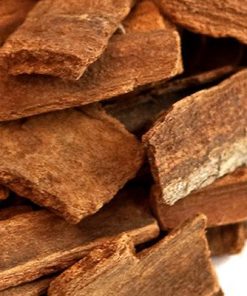Essential Oils, Guide to Oils
What are Hot Essential Oils in Australia and How to Use Them?
If you are an essential oil user, you will likely be aware that safety guidelines vary between different oils. Some oils can be taken internally whilst others can’t, and some can be applied to the skin neat whereas others require dilution. You may have come across the term ‘hot oils.’ These oils are nothing to be afraid of, but they do require some precautions. Read on to find out what hot oils are and how to use them safely.
If you are an essential oil user, you will likely be aware that there are differences between different oils. Some oils can be taken internally, while others can’t. Similarly, some Australian essential oils can be applied to the skin directly, whereas others require dilution.
You may have come across the term ‘hot essential oil’ in Australia. These oils are nothing to be afraid of, but they do require some precautions. Read on to learn what hot oils are and how to use them safely.
What are hot oils?
Hot oils produce a warming or burning sensation when they come into contact with the skin. Warm essential oils in Australia, like hot oils, also create a warming sensation, but they are not as strong.
Other oils, such as peppermint and spearmint, provide a sort of spicy, cooling effect when used topically.
What are some hot essential oils?
Some examples of popular hot Australian essential oils include:
If you don’t know whether an oil is hot, check the label to understand the essential oils safe use.
safely
What are the benefits of hot oils?

All Australian essential oils have their own unique set of uses. However, many oils in the ‘hot’ category share some common characteristics and excellent benefits.
Many hot oils are soothing and stimulating and ideal for aromatherapy. They can help ease tension, discomfort, and pain and literally warm you up. Like other oils, hot oils have numerous benefits for overall health. So, it is worth following a few safety tips rather than avoiding them altogether.
How to use hot essential oils safely?

Hot Australian essential oils are safe to use for your overall wellbeing. It can be applied topically if you follow a few precautions to ensure safe usage and a positive essential oil experience. Use extra caution if you have sensitive skin and other health issues.
Tips for using hot oils
Always use a carrier oil to minimise irritation.
Perform a patch test to determine any sensitivity.
While some pure essential oils make a delightful addition to a relaxing bath, you should never use hot or warm oils in the bath.
Never drop hot oils onto the tongue. For internal use, take in a veggie capsule or add it to food. Be aware that one drop may be too much. So it is best to use a toothpick to control the amount of hot oil being added to your cooking.
Hot oil dilution

Hot oils must always be diluted with a carrier oil, such as Fractioned Coconut Oil, before topical application to minimise irritation. Other popular carrier oils include:
Sweet almond oil
Jojoba oil
Olive oil
Grapeseed oil
Never dilute an essential oil with water, as this can exasperate irritation rather than reduce it.
As a general rule of thumb, we recommend using ten drops of essential oil per 2 tbsp of carrier oil for adults. However, if you have sensitive skin, then further dilution may be required. Check our dilution chart to determine the recommended dilution for your age group.
Of course, everybody is different, so if you don’t have a reaction but find the warming sensation a bit too intense, you can try diluting the oil further to find what works for you. This may also vary between different hot oils.

Patch test to determine any sensitivity.
Before using any essential oil topically, we highly recommend doing a patch test; this is particularly so if you are using hot oil or if you have sensitive skin.
To perform a patch test, add one drop of oil to 10 drops of carrier oil and apply it to a small patch of skin on your forearm. Reactions typically occur within 5-10 minutes of application. However, you should monitor the area for redness or irritation over the next 1-2 hours before proceeding further.
This process should be repeated with all pure essential oils you want to use topically, as you may react to some but not others.
What to do if you experience a reaction to a hot oil?

If you experience redness, irritation, discomfort, an intense hot or burning sensation, or develop a rash, never apply water, as this may increase your discomfort. Instead, immediately apply carrier oil to the area and repeat as required until the reaction diminishes.
Skin sensitivity may fluctuate over time; therefore, it is recommended that you patch test again before using an oil that you haven’t used in a long time. Similarly, if your reaction is not too severe, then you can try another patch test in the future using more carrier oil to dilute the essential oil.
If you experience a reaction to any essential oil, it does not mean you need to throw it away. Instead, you can try diffusing the oil to enjoy its soothing aromas. Most pure essential oils are safe for diffusion but always check the label.
Conclusion
Like other pure essential oils, hot oils provide a range of benefits to the body and mind. However, to ensure a safe and enjoyable experience, you should follow our tips and advice above.
In case you experience nausea or any other adverse symptoms, you should consult a healthcare professional without delay.
















